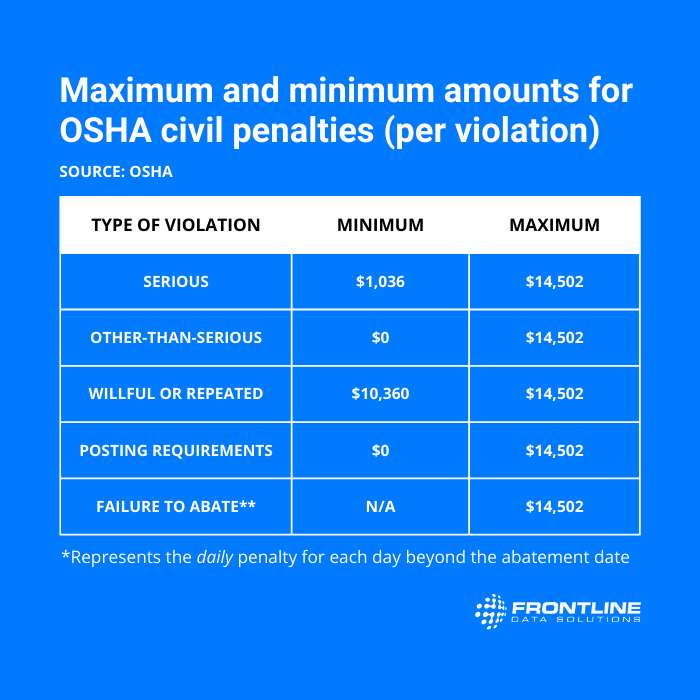EHS software for municipalities
The challenge of municipal EHS management lies in the oversight of multiple public works departments. Each facility comes with its own unique systems of OSHA reporting, incident management, and process improvement. And that makes oversight tricky.
For municipalities struggling with frequent OSHA citations or disorganization across facilities, standardization is key. The first step in fixing the problem is finding a simpler, more effective way to track important metrics and documents.
Many organizations are turning to EHS software as the solution. It aggregates crucial information like incident reports, safety training logs, action items, process improvement plans, and more. Having access to this information from any location means that decision makers are better informed and equipped to address recurring issues with city EHS compliance.
The cost of poor oversight
In 2019, utilities accounted for 6.2% of all state and local government expenditures. This equates to $248M, a figure which increases annually.
But that sum isn’t evenly distributed across all municipalities. And some public works departments are severely underfunded to begin with.
For large corporations, OSHA penalties may be drops in the bucket compared to their overall budget. But at the local government level, these expenses may directly affect the health and wellbeing of an entire community.
When you’re managing a tight budget, you must consider the long-term value of preventative measures. Each dollar spent on rework from OSHA citations and disorganized reporting takes away from future progress.

And not only that, but city workers also suffer.
If you manage a wastewater treatment facility with complex management of change (MOC) procedures, for example, can you afford to miss major checkpoints in the process?
A single oversight can lead to a large system failure. And the byproduct of that could be workplace injuries and illnesses or environmental contamination in the surrounding community.
Environmental, health, and safety regulations are supposed to protect workers and civilians from negligence. And the cost of poor oversight is growth. Local government leaders need to consider their role in protecting the communities that they’re elected to lead.
Importance of environmental protection for the community
According to the National Association of State Budget Officers (NASBO), “state capital spending for environmental purposes in fiscal year 2021 totaled $7.1 billion (about $22 per person in the US), 5.4 percent of total capital spending.” Compared to earlier decades, environmental spending has increased significantly. Once this budget is divided among various towns and cities, however, what kind of impact does it really have?
Many communities must stretch their budgets to implement new programs. When all is said and done, immediate needs often outweigh preventative initiatives. This is a shame, given the positive impact that governments can have on the local environment (in the form of policies, public influence, and reform).
What’s not known about environmental spending is the percentage of costs that are preventative rather than reactive.
Community members depend on elected leaders to ensure sufficient oversight and proper compliance from public works departments and organizations in the area.
In truth, however, many municipalities don’t have a well-thought-out approach for EHS compliance. Instead, their various facilities and operations rely on outdated methods of OSHA recordkeeping and administering safety training. This fuels a reactive mindset and makes it difficult to eliminate hazards and prevent incidents.
Managing contract workers with software
Using Frontline CSM, you can easily verify that your contractors meet compliance requirements.
Impact on public health
The dangerous side effect of poor EHS management at the local government level is the increased likelihood of public health issues. It can stem from a lack of environmental protection(s), inadequate safety protocols, or both.
Effectively managing critical processes like wastewater treatment and hazardous waste collection/disposal requires a standardized approach. Streamlining the way you record things like process changes, employee training, and OSHA reports, is a powerful solution.
A streamlined process makes it easier for public works departments and facilities to track compliance and ensure employees have critical safety training. With this software, they can better protect their communities by preventing water contamination issues and improving/maintaining air quality standards (among other benefits).
Implications for city workers and contractors
Nothing says more about an organization than the way it takes care of its employees. But there are several reasons why it’s difficult to improve the safety management of public services:
- Municipal services often work independently of one another, making it hard to streamline approaches and ensure widespread compliance.
- A city or town may employ many contractors, but it might not have a way to ensure these workers are compliant with OSHA regulations.
- Some municipal services involve complicated compliance guidelines, like those related to management of change procedures.
- Each department may have its own existing system for incident reporting, recording safety training, and tracking compliance.
- Municipalities may suffer from bureaucratic systems that stifle change and progress.
These issues prevent departments from innovating, reducing safety hazards, and preventing injuries/illnesses for both their workers and the public. But an EHS software system solves many of these problems by:
- Centralizing all the reports and documents needed for OSHA compliance
- Providing oversight of training for both government employees and outside contractors
- Analyzing departmental performance on leading indicators of good safety management
All these benefits make it simpler to figure out how the department is doing and to set goals moving forward. Plus, cloud-based software allows users to see important data from any location if they have internet access. This means that both department heads and site supervisors can access reports and analytics whenever and wherever they need to.
